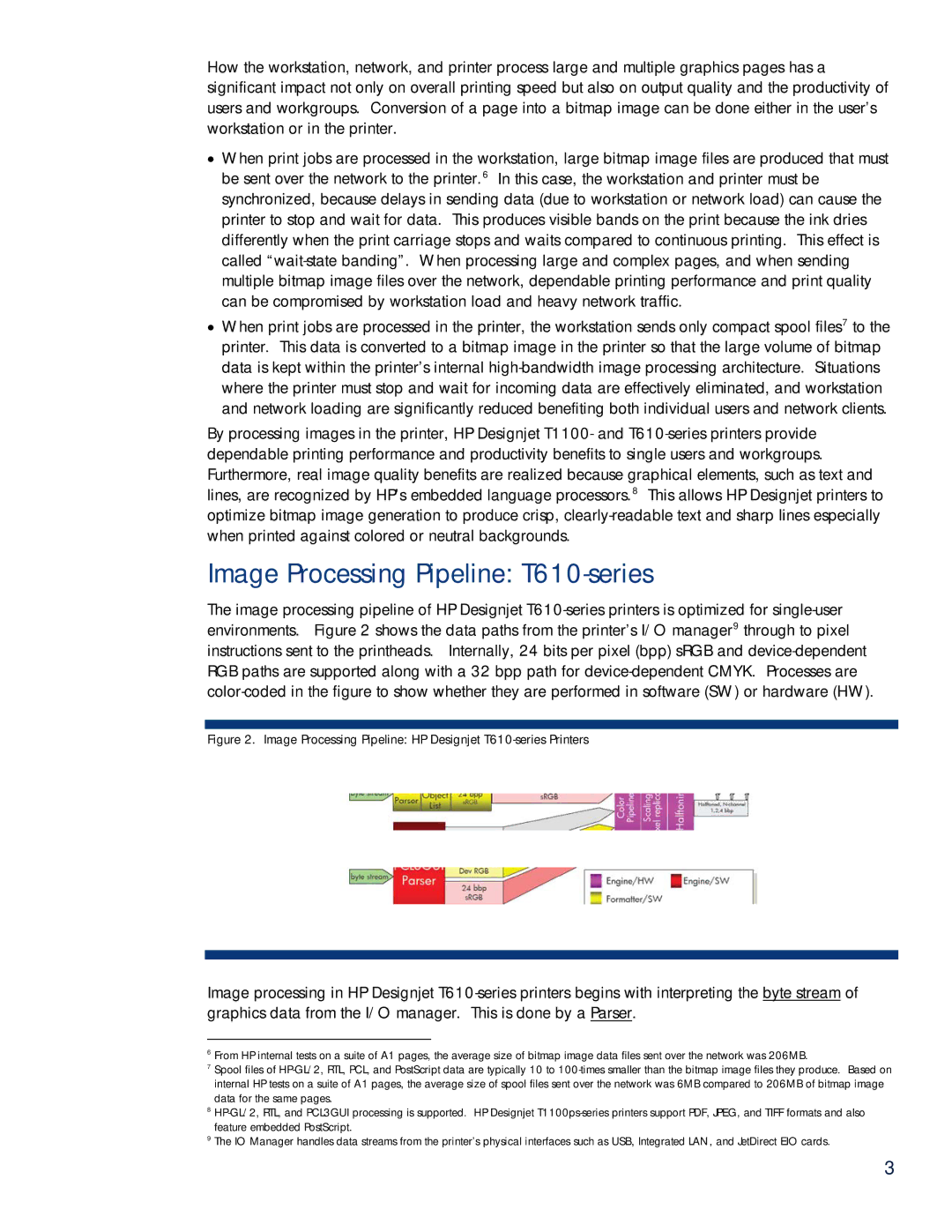How the workstation, network, and printer process large and multiple graphics pages has a significant impact not only on overall printing speed but also on output quality and the productivity of users and workgroups. Conversion of a page into a bitmap image can be done either in the user’s workstation or in the printer.
•When print jobs are processed in the workstation, large bitmap image files are produced that must be sent over the network to the printer.6 In this case, the workstation and printer must be synchronized, because delays in sending data (due to workstation or network load) can cause the printer to stop and wait for data. This produces visible bands on the print because the ink dries differently when the print carriage stops and waits compared to continuous printing. This effect is called “wait-state banding”. When processing large and complex pages, and when sending multiple bitmap image files over the network, dependable printing performance and print quality can be compromised by workstation load and heavy network traffic.
•When print jobs are processed in the printer, the workstation sends only compact spool files7 to the printer. This data is converted to a bitmap image in the printer so that the large volume of bitmap data is kept within the printer’s internal high-bandwidth image processing architecture. Situations where the printer must stop and wait for incoming data are effectively eliminated, and workstation and network loading are significantly reduced benefiting both individual users and network clients.
By processing images in the printer, HP Designjet T1100- and T610-series printers provide dependable printing performance and productivity benefits to single users and workgroups. Furthermore, real image quality benefits are realized because graphical elements, such as text and lines, are recognized by HP’s embedded language processors.8 This allows HP Designjet printers to optimize bitmap image generation to produce crisp, clearly-readable text and sharp lines especially when printed against colored or neutral backgrounds.
Image Processing Pipeline: T610-series
The image processing pipeline of HP Designjet T610-series printers is optimized for single-user environments. Figure 2 shows the data paths from the printer’s I/O manager9 through to pixel instructions sent to the printheads. Internally, 24 bits per pixel (bpp) sRGB and device-dependent RGB paths are supported along with a 32 bpp path for device-dependent CMYK. Processes are color-coded in the figure to show whether they are performed in software (SW) or hardware (HW).
Figure 2. Image Processing Pipeline: HP Designjet T610-series Printers
Image processing in HP Designjet T610-series printers begins with interpreting the byte stream of graphics data from the I/O manager. This is done by a Parser.
6From HP internal tests on a suite of A1 pages, the average size of bitmap image data files sent over the network was 206MB.
7Spool files of HP-GL/2, RTL, PCL, and PostScript data are typically 10 to 100-times smaller than the bitmap image files they produce. Based on internal HP tests on a suite of A1 pages, the average size of spool files sent over the network was 6MB compared to 206MB of bitmap image data for the same pages.
8HP-GL/2, RTL, and PCL3GUI processing is supported. HP Designjet T1100ps-series printers support PDF, JPEG, and TIFF formats and also feature embedded PostScript.
9The IO Manager handles data streams from the printer’s physical interfaces such as USB, Integrated LAN, and JetDirect EIO cards.

